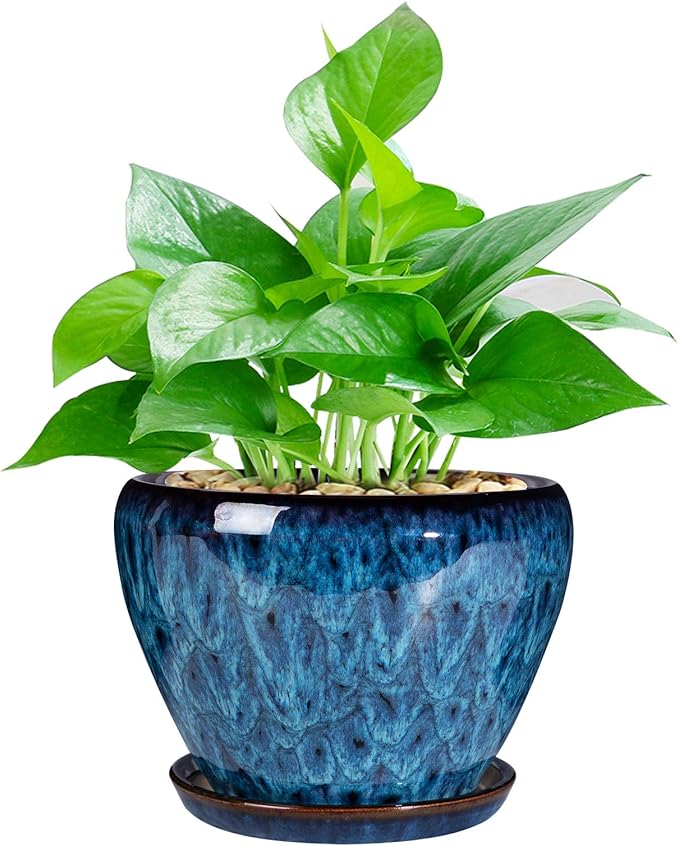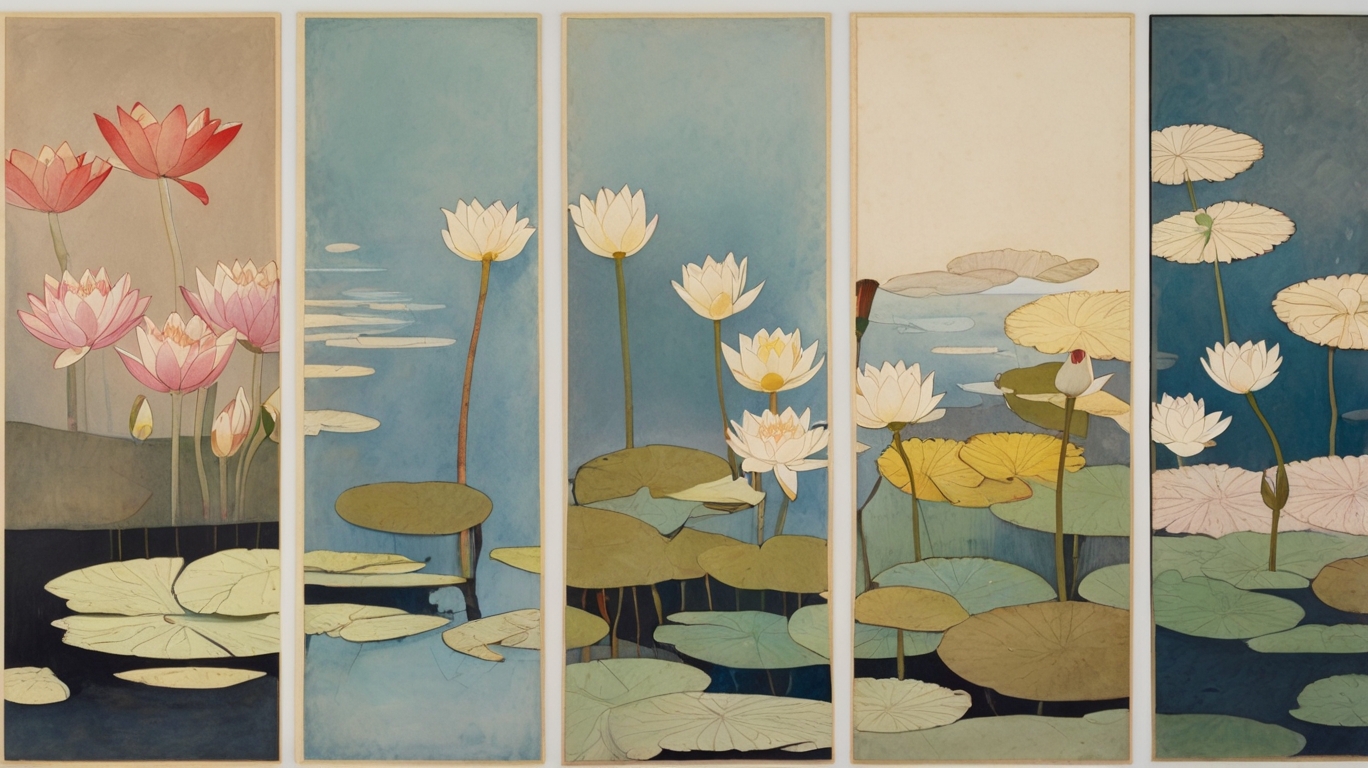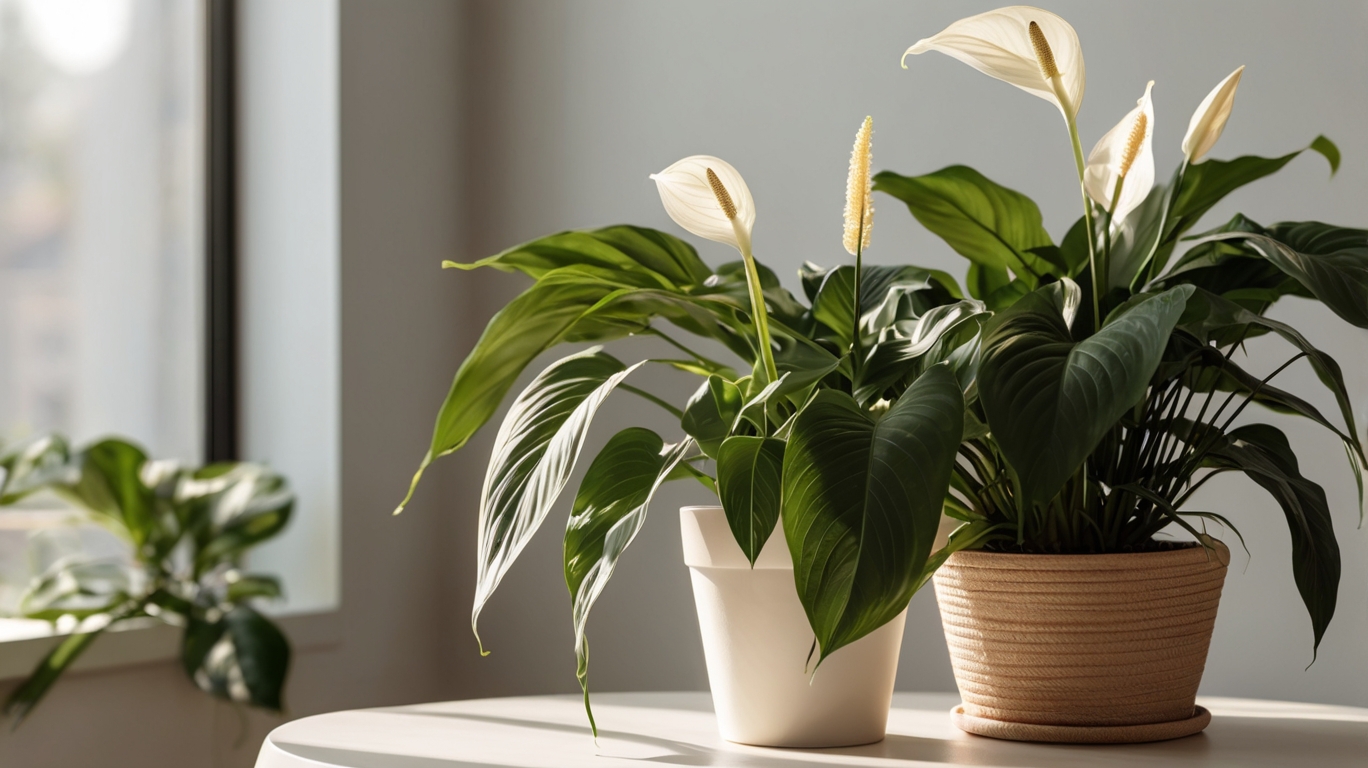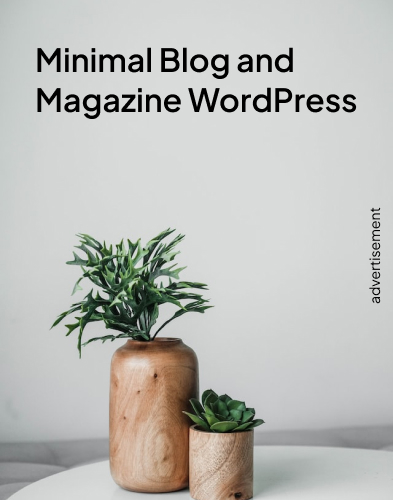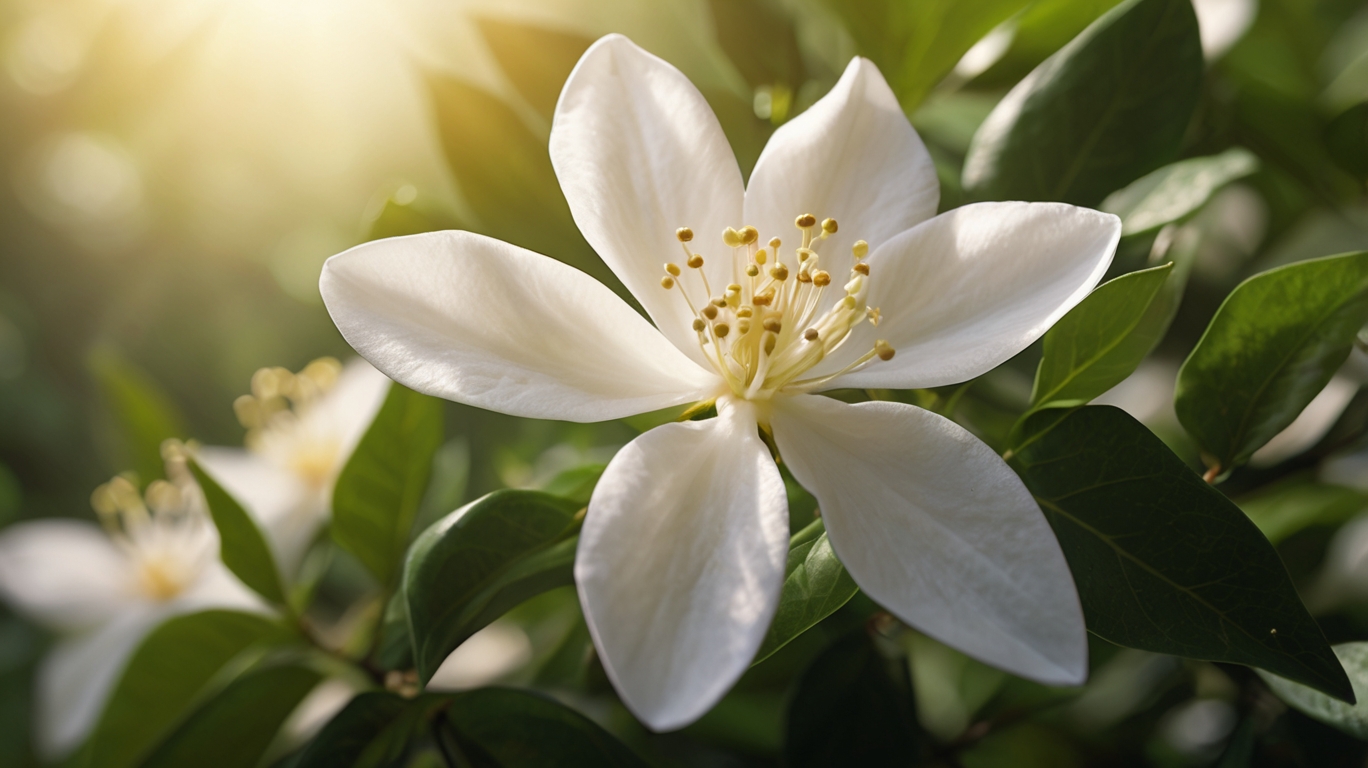What Color Is a Jasmine Flower? Discover the 4 Beautiful Variations
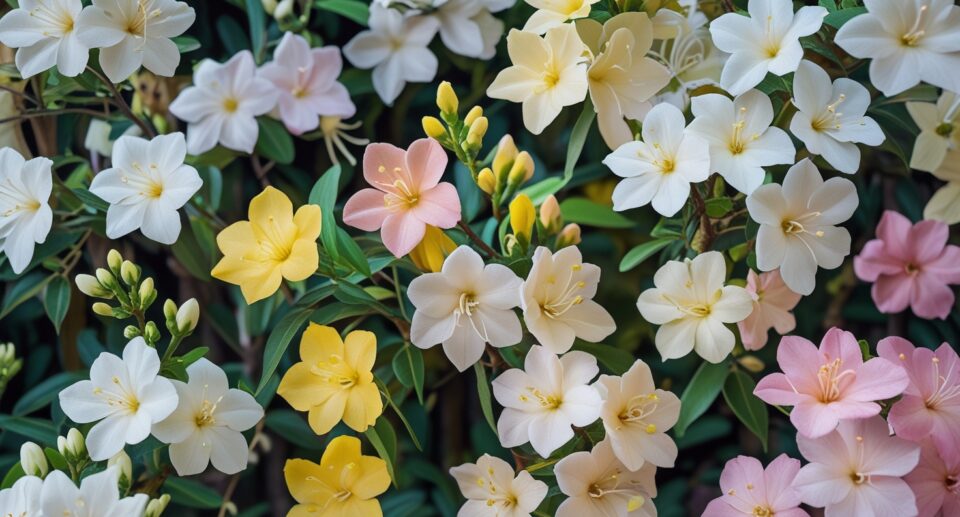
Introduction
Jasmine flowers have captivated people for centuries with their enchanting fragrance, graceful petals, and ethereal charm. Revered in gardens and courtyards around the globe, they’ve long been associated with romance, purity, and serenity. But one question that often lingers in the minds of both amateur gardeners and seasoned botanists is: what color is a jasmine flower?
While white is the most iconic shade, the truth is far more fascinating—jasmine flowers come in a spectrum of natural and cultivated hues, each with its own unique story, symbolism, and horticultural value. This comprehensive guide explores the different colors of jasmine flowers, what each shade represents, and how factors like species, climate, and care techniques influence their vivid appearance. Whether you’re planting your first jasmine vine or simply curious about their symbolic meanings, you’ll discover everything you need to know right here.
Understanding Jasmine: A Fragrant Icon
The jasmine plant belongs to the Oleaceae family, with over 200 species spread across tropical and warm temperate regions. Often associated with love and purity, jasmine is a staple in gardens, essential oil production, and traditional ceremonies.
Natural Colors of Jasmine Flowers
While many people assume that jasmine flowers only come in white, there is actually a variety of natural colors:
- White: The most common and traditional jasmine flower color.
- Yellow: Seen in varieties like Italian jasmine (Jasminum humile).
- Pale Pink: Found in some hybrid species such as Jasminum polyanthum.
- Cream: A softer alternative to pure white, offering subtle elegance.

Popular Jasmine Species and Their Colors
Different species of jasmine boast their own unique flower colors. Here are some of the most popular species and the colors they exhibit:
- Jasminum sambac (Arabian Jasmine): Pure white, strongly fragrant blooms. National flower of the Philippines and Indonesia.
- Jasminum officinale (Common Jasmine): White or slightly yellowish petals. It is known for its abundant blooming.
- Jasminum polyanthum: A fast-growing climber that produces clusters of pink buds that bloom into white flowers with a pinkish hue.
- Jasminum nudiflorum (Winter Jasmine): Distinct for its bright yellow flowers that bloom in late winter to early spring.
- Jasminum humile (Italian Jasmine): Produces vibrant yellow blooms, often used for ornamental purposes.
Rare and Unusual Jasmine Flower Colors
Although white and yellow are dominant, rare jasmine varieties may show:
- Orange-tinted blooms: In some hybrids under specific growing conditions.
- Deep pink or reddish hues: Very rare, mostly due to genetic modification or hybridization.
- Purple jasmine: While not naturally occurring, some cultivars are engineered for novelty, often through selective breeding or dyeing processes.
These rare colors are less common in nature but highly prized by collectors and botanical enthusiasts for their uniqueness.
Factors Affecting Jasmine Flower Color
The color of jasmine flowers can be influenced by a wide array of environmental and genetic variables that collectively shape the vibrancy and hue of the blooms:
- Species and genetics: This is the foundational factor. Each jasmine species has a specific genetic makeup that determines its potential flower color range. For instance, Jasminum sambac is naturally white, while Jasminum humile displays yellow.
- Soil pH and composition: The acidity or alkalinity of the soil affects how nutrients are absorbed, which in turn influences pigment expression in the petals. Acidic soils tend to bring out richer tones, especially in hybrids.
- Climate and temperature: Temperature fluctuations during the budding phase can cause subtle shifts in flower tone. Cooler climates may yield deeper or more saturated colors, especially in varieties with pink or yellow blooms.
- Sunlight exposure: Jasmine requires a good amount of sunlight to develop vivid colors. Inadequate light can lead to paler, less vibrant flowers due to insufficient chlorophyll and anthocyanin production.
- Nutrient availability: A flower’s color is often a reflection of the plant’s overall health. Nutrients such as phosphorus, potassium, and magnesium support not only blooming but also pigment synthesis, making flowers appear brighter and more vivid.
Symbolism and Meanings by Color
Each jasmine flower color carries its own symbolic meanings, deeply rooted in cultural, spiritual, and emotional interpretations. These meanings can offer insight into the subtle messages conveyed by flower arrangements and decor choices:
- White Jasmine: Universally recognized as a symbol of purity, innocence, and spiritual enlightenment. Its association with weddings and religious rituals underscores its representation of fresh beginnings and sacredness.
- Yellow Jasmine: Reflects warmth, happiness, and strong bonds of friendship. Its sunny hue makes it a perfect choice for festive events and uplifting gifts.
- Pink Jasmine: Evokes emotions of romance, tenderness, and affection. Often associated with heartfelt sentiments, this shade is ideal for expressions of love and emotional closeness.
- Cream Jasmine: Embodies sophistication, elegance, and timeless beauty. Its understated tone makes it suitable for formal events, classical arrangements, and commemorative occasions.
By understanding the symbolic meanings tied to each jasmine color, one can make more intentional choices—whether selecting flowers for a celebration, offering them as a spiritual gesture, or incorporating them into everyday living spaces for deeper emotional resonance.
Jasmine Color in Culture and Tradition
Jasmine flowers, regardless of their color, hold strong cultural symbolism across different parts of the world. Here’s how the color specifically influences the meaning of jasmine in various cultures:
-
India:
-
White Jasmine: Highly sacred, often used in religious rituals and offered to deities in Hindu temples. Its purity and fragrance make it an important part of spiritual practices.
-
Yellow Jasmine: In some regions, yellow jasmine is associated with the vibrancy of spring and used during festivals to mark new beginnings and joy.
-
-
China:
-
Jasmine is often seen as a symbol of feminine sweetness and grace. The flower’s delicate scent and color are incorporated into teas and perfumes, adding a layer of elegance to the cultural experience.
-
-
Philippines and Indonesia:
-
The Jasminum sambac (white jasmine) is the national flower. It represents purity, patriotism, and a sense of national pride. The flower’s symbolism extends beyond just beauty, carrying a deep connection to identity and values.
-
-
Thailand:
-
Jasmine, especially white varieties, is linked to motherhood. It is commonly given as a gift on Mother’s Day, symbolizing the love, respect, and care associated with motherhood.
-
In these traditions, the specific color of jasmine can influence its symbolic meaning, adding deeper layers to cultural rituals, holidays, and personal expressions. The subtle variations in meaning based on color enrich the flower’s universal significance across cultures.
Gardening Tips by Jasmine Flower Color
Indoor vs Outdoor Jasmine Color Differences
When growing jasmine indoors, it’s important to understand that its coloration may vary compared to outdoor plants due to several factors. Here’s a deeper look into why indoor jasmine might show different coloration:
-
Light Intensity:
-
Reason: Indoor jasmine receives less direct sunlight than outdoor plants, which can lead to paler or less vibrant flowers. Light plays a crucial role in the production of pigments that give flowers their color, so insufficient light can result in faded blooms.
-
Solution: Place your jasmine in a location that gets plenty of bright, indirect sunlight. A south-facing window with filtered light is ideal. If needed, you can also use grow lights to supplement natural light.
-
-
Air Circulation:
-
Reason: Poor airflow indoors can lead to stagnant air around the plant, making it harder for the jasmine to thrive. This can indirectly impact flower pigmentation by stressing the plant.
-
Solution: Ensure good air circulation by occasionally opening windows, using fans, or placing the plant in a room where the air moves naturally. Proper ventilation helps reduce stress and promotes healthier blooms.
-
-
Humidity Levels:
-
Reason: Indoor environments tend to be drier than outdoor ones, especially during winter when heating systems are in use. Dry air can stress the plant, affecting bloom quality and color.
-
Solution: Increase humidity by misting the plant, using a humidifier, or placing the pot on a tray filled with water and pebbles to create a more humid microenvironment. Regularly checking moisture levels in the soil also helps maintain healthy plant growth.
-
For Best Color Retention:
-
Indirect Sunlight: Ensure the jasmine gets plenty of bright, indirect sunlight. Direct sunlight might be too intense for indoor plants.
-
Consistent Watering: Jasmine prefers consistently moist soil but not soggy. Make sure the soil is well-drained and water when the top inch feels dry.
-
Good Airflow: Ensure the room has proper air circulation to prevent stagnation, which helps in maintaining plant health and color vibrancy.
By managing these factors, you can help your indoor jasmine maintain its vibrant colors and overall health.
How to Enhance Jasmine Flower Color
To achieve the most vivid colors in jasmine flowers, a combination of good soil practices, proper feeding, and consistent care is key. Here’s how to maximize the flower’s color intensity:
-
Use Organic Compost:
-
Why: Organic compost enriches the soil with nutrients and improves its structure, leading to better water retention and enhanced nutrient absorption. Healthy soil helps the jasmine produce vibrant blooms.
-
How: Incorporate compost into the soil during planting and top-dress the plant yearly to maintain soil fertility.
-
-
Apply Phosphorus-Rich Fertilizer:
-
Why: Phosphorus encourages strong root growth, healthy blooms, and color vibrancy. It’s crucial for the flower’s development, ensuring it produces bright and beautiful colors.
-
How: Use a balanced fertilizer with higher phosphorus content (like a 10-30-10 formula) during the growing season, especially in early spring to promote flowering.
-
-
Control pH Levels:
-
Why: Jasmine thrives in slightly acidic soil (pH 6.0–6.5). When the soil pH is in this range, the plant can absorb nutrients more effectively, leading to better color development in its blooms.
-
How: Test your soil’s pH and amend it if needed. You can add organic matter like peat moss to lower the pH or lime to raise it.
-
-
Prune Regularly:
-
Why: Regular pruning encourages new growth, which means more flowers and more vibrant colors. It also helps remove old, damaged, or spent blooms, promoting healthy, fresh growth.
-
How: Prune jasmine after the flowering season to remove dead stems and encourage branching, which will result in more flowers next season.
-
-
Avoid Overwatering:
-
Why: Overwatering can lead to root rot, which can severely damage the plant and cause dull or poor-quality blooms. Proper drainage is essential to keep the plant healthy and vibrant.
-
How: Water only when the top inch of soil feels dry. Make sure the pot or garden bed has good drainage to prevent water from accumulating around the roots.
-
By following these practices, you’ll not only maintain the health of your jasmine plant but also encourage the vivid, colorful blooms that make it such a stunning addition to your garden.
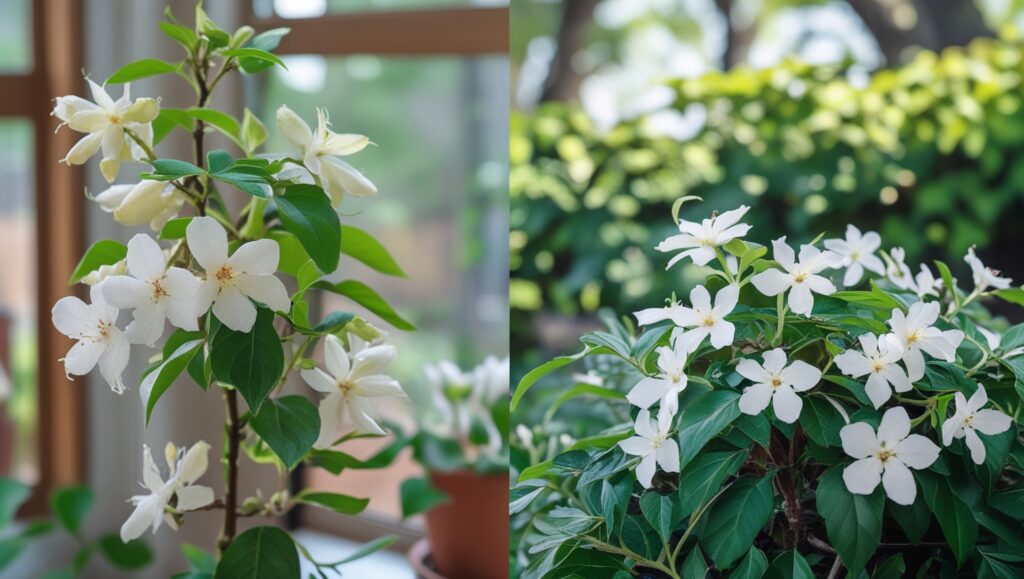
Jasmine Flower Color and Plant Health
Flower color is a great indicator of the overall health of your jasmine plant. By observing changes in bloom and leaf color, you can pinpoint potential issues and take appropriate action. Here’s how different flower and leaf colors can signal the plant’s health:
-
Faded or Discolored Blooms:
-
What it signals: This can often point to nutrient deficiencies, especially a lack of essential minerals like phosphorus or potassium, which are important for flower color and bloom health. Additionally, insufficient sunlight can cause blooms to lack vibrancy, as flowers need adequate light to produce rich pigments.
-
What to do: Ensure your jasmine is receiving enough light, ideally bright, indirect sunlight. Apply a phosphorus-rich fertilizer to boost bloom quality, and check for any nutrient imbalances.
-
-
Yellowing Leaves with Poor Flowering:
-
What it signals: Yellowing leaves can indicate several issues, but it’s most commonly a sign of overwatering or poor soil drainage, leading to root rot. It can also indicate nutrient imbalances, like a lack of nitrogen or iron, which are essential for healthy foliage.
-
What to do: Avoid overwatering, ensuring that the soil is well-draining. If grown in a pot, check for drainage holes and allow excess water to escape. Consider using a balanced fertilizer and check the pH level to ensure it’s within the ideal range for jasmine (slightly acidic). Also, prune any yellowed or damaged leaves to promote new, healthy growth.
-
-
Vibrant Colors with Lush Green Foliage:
-
What it signals: This is a clear sign of a healthy, well-cared-for plant. Vibrant blooms and lush, green foliage indicate that the jasmine is getting the right amount of sunlight, water, and nutrients.
-
What to do: Keep up with your care routine, ensuring consistent watering, good soil health, and regular pruning. Continue applying fertilizer as needed, and monitor the plant for any signs of stress.
-
By regularly checking the color and condition of both the flowers and leaves, you can quickly identify whether your jasmine needs adjustments in care, helping it to thrive and produce its most vibrant blooms.
Seasonal Color Changes in Jasmine
Jasmine flowers may change slightly with the seasons:
- Spring and early summer: Typically yield the brightest and most fragrant blooms.
- Late summer: Some species may fade in intensity due to heat stress.
- Winter blooming varieties: Such as Jasminum nudiflorum, maintain color well in cooler temperatures.
These changes are usually subtle but worth noting for gardeners aiming for continuous bloom cycles.
Uses of Jasmine Based on Flower Color
The color of jasmine flowers may influence how they are used:
- White jasmine: Weddings, religious offerings, and essential oils.
- Yellow jasmine: Decorative garlands and cheerful bouquets.
- Pink jasmine: Romantic gifts and ornamental climbing displays.
- Cream jasmine: Premium teas, perfumes, and upscale events.
Color selection can be both an aesthetic and symbolic decision, especially in event planning and product formulation.
Conclusion
So, what color is a jasmine flower? While white remains the most iconic hue, jasmine flowers bloom in a delightful spectrum—from soft pinks and cheerful yellows to rare orange and even hybrid purples. These colors not only enhance the aesthetic appeal of the plant but also hold rich cultural and symbolic meanings. Whether you’re planting jasmine in your garden, using it in spiritual rituals, or admiring its beauty in a bouquet, understanding its color variations adds depth to your appreciation of this beloved flower.
FAQs
1. What is the rarest jasmine flower color? Purple or deep pink hues are the rarest, often achieved through hybridization or genetic modification.
2. Can jasmine change color as it matures? Yes, some jasmine varieties may show subtle shifts in color due to age, season, or environmental conditions.
3. Does flower color affect jasmine’s fragrance? Not significantly. Most jasmine species are fragrant regardless of flower color.
4. Is there a blue jasmine flower? No naturally occurring blue jasmine exists. Any references are typically misidentified species or dyed blooms.
5. Which jasmine is best for indoor growing? Jasminum polyanthum is popular for indoor use due to its compact size and fragrant pink-tinged white flowers.
Click the link below to buy “FLOWER Retro Wooden Stand Plant Terrarium with 3 Bulb Glass Vases for Hydroponic Home & Office Décor”
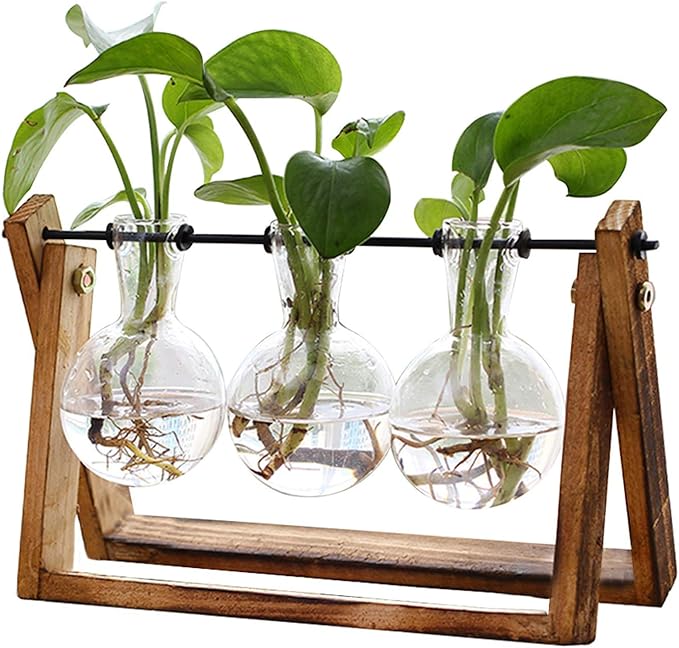
“Click the link below to buy “6-inch modern ceramic planter with glaze, drainage hole, and saucer for indoor & outdoor plants.”
